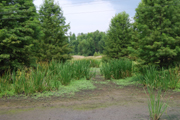
|
TENNESSEE WILDLIFE VIEWING TRAIL » West Tennessee
Black Bayou Refuge
Site Description: Black Bayou Refuge is a 1,350 acre management area adjacent to Reelfoot Lake in Lake County, TN. The area is comprised of mature forest, willow thickets, sloughs and open water (when water is retained and area is flooded). Crops are planted in ponds for wintering waterfowl use. A large Observation Tower, built with funds from the Watchable Wildlife Endowment Fund, can be good for wildlife viewing; however the tower overlooks corn fields and rarely offers habitat and wildlife to view. Burnt Woods Rd (36.444278,-89.385667) is a road/trail through bottomland hardwood forests. Drive past the observation tower and in two-thirds of a mile the road bends to the left and on the right is a small road that leads to a parking area. Walking this road in winter can be very productive with all the resident woodpeckers present, fox sparrows, hermit thrushes, both kinglets, etc. Woodland birding here is excellent. In summer, if you are willing to walk far enough and put up with the mosquitoes, you can find Swainson's Warblers in the cane thickets. Upon driving further up the main gravel road you pass an old pumping station and eventually come out of the woods along ag fields. Some of these fields retain water and may produce shorebirds. Some years these fields are planted in rice and can be excellent rail habitat if you know when they are harvesting in September.
NOTE: Please refer to TWRA Hunting Guide about hunting seasons and public access dates. Access dates vary by site. Submit your data to eBird and help us build a list of birds seen at this site Be sure to check out our Safety Tips page for important information regarding viewing wildlife in these areas. |
|
Policies & Privacy
View full site | ©Copyright 2024 TWRA |


